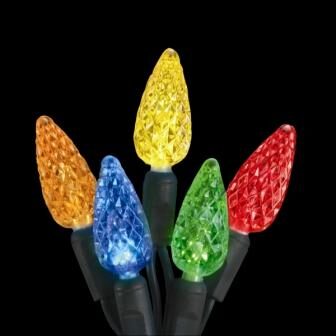A. LEDs
LEDs in other bulbs are usually placed near the heat sink so that most of the light is cast upward. Switch’s LEDs are positioned roughly in line with the bulb’s equator; the light shines multi-directionally for more uniform illumination.
B. Volume Compensation Mechanism
As the silicone expands and contracts from heating and cooling, respectively, a piston moves down or up (also respectively) to regulate overall pressure inside the bulb—so it doesn’t, you know, explode.
C. Fins
The 10 white blades work in concert with the silicone to regulate heat, distributing it evenly around the core and ensuring uniform circulation of the liquid.
D. Heat Sink
Along with the silicone and the fins, the heat sink serves as yet another cooling agent, drawing heat away from the driver. The cooler the driver, the more powerful it is—and thus able to produce more light.
E. Driver
This element inside the base converts electricity to power the LEDs. Cooled by the silicone, the LEDs put less drag on the driver, increasing its power and efficiency.
F. Liquid Silicone
The viscous goo acts as a coolant. Silicone warmed by the LEDs circulates outward to the glass shell, where heat dissipates. The liquid is non-toxic. In fact, it’s also used as a foaming agent in beer.
















